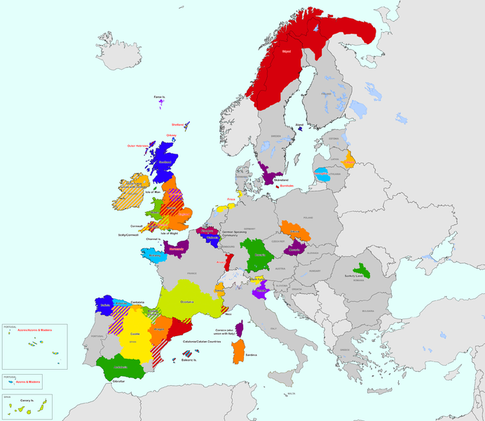Bad Fences
In 1948, the Hague Congress met to determine the future of Europe, and how to avoid another devastating war. Robert Schuman’s plans to strengthen ties between France and Germany being dismissed as ridiculous, the Congress settled upon a technological, rather than economic, solution to the problem.
Force field technology was originally developed by the Soviets as a defense against American nuclear weapons, but was quickly used to reinforce the western border of the new Warsaw Pact. When plans for the technology leaked, western nations erected their own Field stations along their side of the Warsaw Pact border, severing communication with Eastern Europe by ground, air, or radio.
Western European Fields were less uncompromising, leaving open corridors at border crossings too small to push an army through. War in Europe had become impossible.
The domestic use of Field technology was originally supposed to be limited to crow-control and strictly temporary. However, after the partition of Belgium in 1967, the use of Fields to separate antagonistic regions within European states became more common. In the name of preventing civil war, the 1960s and 70s saw the “hermetization” of Flanders, Wallonia, German Belgium, Alsace, Catalonia, Euskal Herria, Samiland, Galicia, Brittany, Occitania, Normandy, East Frisia, Frisia, Andalusia, and Scotland.
The hermetisization Macedonian Greece and Albanian Greece (in addition to the partitioning of Turkey into more than five parts) raised some alarm, as these countries were seen as strategically important border states with the Soviet Sphere. However, due to the fact that military cooperation between the western European states was impossible, and that absolutely nothing had been heard from the Warsaw Pact nations for nearly a decade, no action was taken.
By the mid 1970s time, European economies had been moribund for a decade, civil infrastructure was breaking down, and politics became increasingly nationalistic and divisive. Separatist were given free reign, dividing formerly large states into enclaves along by ever-more-fine ethic divisions. Early “auto-hermetized” regions included Franconia, Sleswick-Holsatia, South Tyrol, Aragon, Cantabria, Castile, Leon, Olivenza, Asturias, Jura, Ticino, Cornwall, Wales, and Wessex. Surely more regions followed, but here the historical record becomes patchy.
It is unknown, for example, whether cities such as Venice, Geneva, and London intentionally auto-hermetized, or whether they were simply cut off when all of their surrounding hinterlands threw up borders. Clearly, there were not enough resources within these hermetized cities to sustain their populations.
De-hermetization was a slow and patchy process. Smaller enclaves de-hermetized first, as they lost the skills and resources to keep their Field generators operational. Many promptly re-hermetized, or were re-hermetized as still-functioning states threw up walls to protect themselves from starving refugees. It was not until the late 1980s that any tracts of territory larger than 30,000 square kilometers emerged, usually inhabited only by scattered subsistence farmers.
Clearly, something had to be done. The North American Territorial Operation (NATO) extended its protection over re-emerging Europe, organizing relief, re-building communication and transportation networks, and gunning down anyone who gets their hands on a working Field generator. The goal is the produce a unified, peaceful, stable Western European state by 2020, when our calculations indicate that the Field around Eastern Europe will fail, and we will have to deal with whatever waits on the other side.





